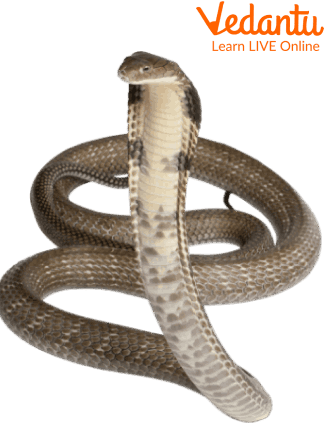




An Overview of Snake
Snakes are elongated, limbless, carnivorous reptiles that are part of the Serpentes suborder. Snakes are ectothermic amniotes with overlapping scales, just like all other squamates. Lizards resemble snakes; however, several common legless lizard families have external ears and eyelids, which snakes do not. This rule is not always applicable, though. In this article, we will read about snakes and lizards.

Snakes
Snake Characteristics
Many snake species have more joints in their skulls than their lizard ancestors had, allowing them to swallow prey that is much bigger than their heads. Snakes have paired organs that are arranged one in front of the other rather than side by side to fit their thin bodies, and the majority only have one functional lung. Some species still have a pelvic girdle with two relic claws on either side of the cloaca. There are numerous lineages of legless lizards as a result of convergent evolution, which has produced elongated bodies without limbs or with greatly reduced limbs about 25 times independently.
Snake Vertebrate or Invertebrate
Snakes are categorized as vertebrates, along with all other reptiles and amphibians, mammals, birds, and fish. Each of these creatures has an internal skeleton. Snakes are creeping creatures that belong to the reptilia class. The subphylum Vertebrata includes the class Reptilia. The vertebral column is developed from the embryonic notochord in vertebrates. Snakes are vertebrates because they have a spinal column as well.
Do Lizards have Backbones?
A type of reptile having dry, scaly skin called a lizard. Lizards often have long tails and four legs. They come in a wide range of sizes, from little to the eight-foot Komodo dragon. Lizards can be found all over the world in a variety of habitats. Snakes, turtles, lizards, and crocodilians make up the majority of the vertebrate group known as reptiles. The most distinctive feature of these creatures is their scaly, dry skin. Birds, mammals, and reptiles all have backbones, but none of them shares any other traits with amphibians.

Lizards
Does Snakes have Backbones?
Snakes do indeed possess a backbone. All snake species have a vertebral column, which is another name for their backbone. Their numerous vertebrae give them a very flexible physique, which makes it quite easy for them to crawl (small bones that form the backbone). Snakes are all classified as vertebrates, which are animals with bones.

Snake
Summary
To conclude all the conceptual understanding regarding snakes in this article we can say that long, legless, carnivorous reptiles are called "snakes." Snakes come in a wide variety of groups and species. Nearly every region of the world has snakes. They come in many sizes, from very little to extremely big. Nothing compares to the delicacy and suppleness of a snake's movements or the feel of its dry, smooth scales.
The majority of snakes only require feeding once or twice a month. Snakes need particular habitats and diets in order to thrive. About every three months, snakes shed their skin. Snakes might require more water during this period. Some snakes are kept as pets in some parts of the world.
FAQs on Is A Snake Vertebrate or An Invertebrate ?
1. Is a snake considered a vertebrate or an invertebrate?
A snake is a vertebrate. This is because all snakes have a backbone, also known as a vertebral column, which is the defining characteristic of vertebrate animals. They belong to the class Reptilia, a major group within the phylum Chordata (which includes all vertebrates).
2. What are the key characteristics that classify an animal as a vertebrate?
An animal is classified as a vertebrate if it possesses a spinal column or backbone. Other key characteristics include:
- An internal skeleton (endoskeleton) made of bone or cartilage.
- A skull that protects the brain.
- A complex nervous system with a spinal cord running through the vertebrae.
- Examples of vertebrates include mammals, birds, reptiles, amphibians, and fish.
3. How are vertebrates like snakes different from invertebrates like earthworms?
The primary difference is the presence of a backbone. Vertebrates, such as snakes, have an internal skeleton with a distinct vertebral column that provides structural support. Invertebrates, such as earthworms, insects, or snails, lack a backbone entirely. Many invertebrates either have a soft body (like an earthworm), a hard external shell (like a snail), or an exoskeleton (like an insect).
4. If snakes are vertebrates that evolved from animals with limbs, why don't they have legs?
The absence of legs in snakes is an example of evolutionary adaptation. Snakes evolved from four-limbed reptilian ancestors. Over millions of years, they adapted to a burrowing or aquatic lifestyle where limbs became a hindrance. Through evolution, these limbs were lost. Interestingly, some snake species, like boas and pythons, still retain tiny, undeveloped hind leg bones known as vestigial spurs, which serve as evidence of their legged ancestors.
5. What is the ecological importance of snakes as vertebrate predators?
As vertebrate predators, snakes play a crucial role in maintaining the balance of their ecosystems. Their primary importance is in controlling the populations of prey animals like rodents (rats, mice) and insects. By keeping these populations in check, snakes help prevent the destruction of crops in agriculture and limit the spread of diseases carried by rodents.
6. How does a snake's backbone allow it to be so flexible?
A snake's incredible flexibility is due to its unique vertebral column. Unlike humans who have 33 vertebrae, a snake can have between 175 to over 400 vertebrae. Each vertebra is connected by a ball-and-socket joint and is attached to a pair of ribs, allowing for a wide range of motion and enabling the snake's signature slithering movement.
7. How does being 'cold-blooded' relate to a snake's classification as a reptile?
Being 'cold-blooded' or ectothermic is a key physiological trait of reptiles, the class to which snakes belong. It means their body temperature is regulated by the external environment, so they must bask in the sun to warm up or seek shade to cool down. While this is a characteristic of their class (Reptilia), their classification as a vertebrate is based purely on their anatomy, specifically the presence of a backbone.









